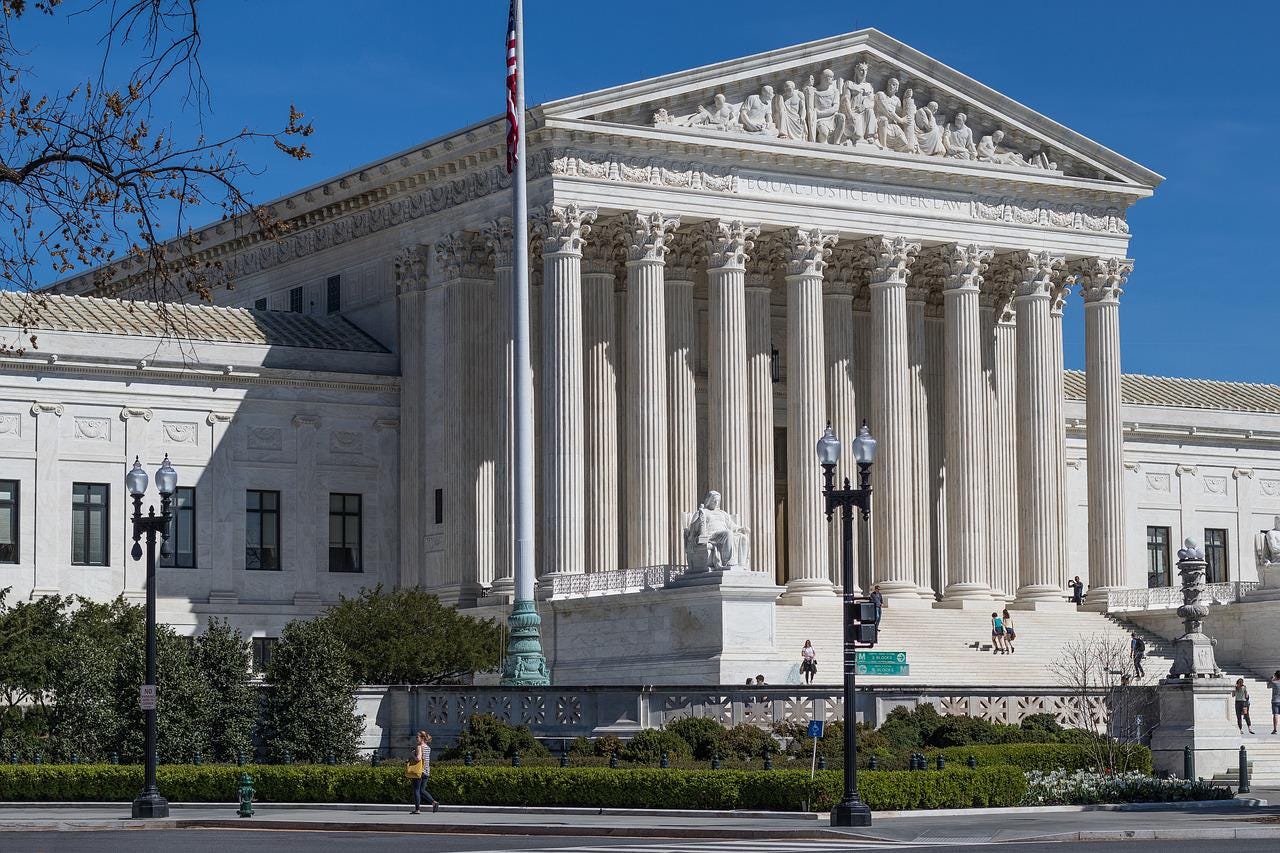With this newsletter I continue my exploration of what I saw at the National Museums of African-American, American Indian, and American History Museums in Washington D.C. this summer, from the point of view of the continuing creativity and invention of Greek Mythology.
Walk into the National Museum of American History with its open lobby and high ceilings, then make an immediate left turn. This is what you will see:

We have a bare-chested George Washington, looking quite impressive and Zeus-like:

The statue of our founding father was created by Horatio Greenough, one of America’s first great classical sculptors. It is going on 200 years old, having been commissioned by the Federal government in 1832 and on display in the Capitol rotunda from 1841-1843. Since 1964 its home has been the museum where it is exhibited now.
The painting is by a French artist, Jean-Auguste-Dominique Ingres, dated to 1811. Greenough may have seen this painting and been inspired by it, but it is more likely he would’ve used as his model the reproductions of the statue of Zeus at Olympia.
Ingres’s subject comes from the Iliad, and involves the goddess Thetis asking Zeus to give glory to her son Achilles by artificially inflating the Trojans’ advantages over the Greeks in the Trojan War while Achilles is “on strike” from the battle, angry at his commanding officer, Agamemnon.
Greenough is more concerned with creating American mythology, though there are elements of Greek myths on Washington’s throne:

On the left side of the throne, for example, we see the baby Hercules in the first of his superhuman deeds, strangling a serpent sent by Hera, Zeus’s wife, who never wants any of Zeus’s illegitimate children (he had Hercules by Alcmene, a mortal) to survive. Note the nice touch of Hercules’s “twin” brother (by Amphitryon, Alcmene’s human husband) Iphicles, who is so terrified he is covering his face with his hands.
Why did Greenough choose this particular story? Perhaps as a symbol of the infant United States defeating the poisonous tyranny of British colonialism?
But here’s the larger question: what prompted Greenough and the US government to think that a half-naked George Washington would make a good subject for a 12-ton marble statue to be displayed in the Capitol rotunda?
Greenough was active during a time known as the age of Philhellenism (“The love of all things Greek”), which corresponded with a previous acceleration of interest in Greece and the legacy of ancient Greece during the Renaissance and Enlightenment. The Greek War of Independence (from the Ottoman Turks) in 1821 served as a focal point for Greece’s popularization in America, when our own war of independence was still fresh in the minds of many. (I am dying to get to this museum in Athens. Wow!)
We embraced the idea of democracy, which the founders took from models in ancient Rome and Greece.
All those Greek columns we see on buildings in the United States are a direct homage to ancient Greece, the Parthenon, and Greek architecture in general.

But the statue itself is not just a copy of an ancient Greek model. It is a reinvention, a re-envisioning.
First, there’s Washington pointing to the sky instead of holding a scepter of power. As we know from the practice of many athletes nowadays when they’ve accomplished something, pointing to the sky indicates thanks to Divine Providence—something Zeus never would have done, since he is already a god. Although the founders weren’t strictly Christian in the way that many today think they were, they did rely on the idea that there was someone or something watching over the birth and development of the nation.
Second, again, instead of that scepter, we have Washington extending his arm to hand back a sheathed sword, which symbolizes that he had the command and the support of the American military and could have become a king or dictator, but chose instead to let democracy be the young nation’s chosen form of government.
Then, of course, there’s the re-purposing of the Hercules story perhaps to point to the precocious nature of the American experiment.
The statue did not immediately win the favor of the American people. They objected to Washington’s bare chest and arms draped in cloth, as if “he had just come out of a bath and was reaching for his towel.”
You can’t please everyone, especially with art.
In any case, this statue is just one of the many indications that Greek Mythology was to take firm hold in the American imagination. About a decade later, Thomas Bulfinch, a bank clerk from Boston, would initiate publication of the trio of works later united as Bulfinch’s Mythology, a popularization of Greek Mythology that is still in print today. Around the same time, Nathaniel Hawthorne (author, among other works, of The Scarlet Letter) released A Wonder Book for Girls and Boys, which revolutionized Greek Mythology for young readers.
A final note if you’ve read this far: I consider subscribers to this newsletter as founders of my manuscript THE INVENTION OF GREEK MYTHOLOGY. Sign up to receive not only essays like this one, but also news about the progress toward publication of the manuscript and offers of advance copies.



Thanks for a great new insight into early American government. 🤓